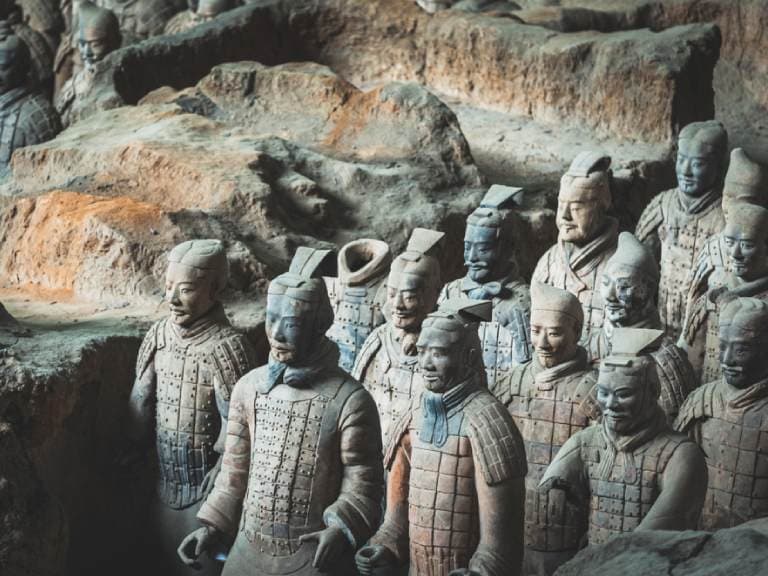History & Culture in China
Did you know these facts about China?
-Football (soccer) was developed in China
History
China is perhaps the structure of Asian civilization, as support of human settlements along the Yellow River Valley that date back to thousands of years. The country became unified by its First Emperor, Qin Shi Huang, in 221 BC. Fifteen years later, China embraced a new dynasty led by Emperor Han, which rose to be the first golden age for the country. Standardized measurement, currency, written symbols, and the invention of significant products like paper and gunpowder helped China experience a period of rapid growth.
For about 2,000 years, a majestic framework was utilized in China, until the fall of the Qing tradition in 1911. This wasn’t an overnight surprise though, as decades prior to their demise colonial powers had begun to tear away parts of the vast empire, such as Hong Kong’s succession to the British, and Taiwan’s succession to Japan.
The Republic of China was founded in 1911 by Sun Yat-Sen, but turbulence followed as the Kuomintang (KMT) and Chinese Communist Party (CCP) initiated conflicts with each other. KMT eventually gained control of Eastern China and prior to the Second World War, industrialized, strengthened and globalized cities like Shanghai which quickly became Asia’s grandest metropolis.
During the war with Japan, China surrendered a lot of its northern domain to the Japanese. Brutal massacres occurred, but with the combined KMT and CCP forces, plus allied assistance, China threw off Japanese occupation in 1945. Not out of the woods, civil war between the democratic and communist parties began almost immediately, lasting until 1949. The KMT were defeated and fled to Taiwan. Meanwhile, on mainland China, Mao Zedong’s communist party created the People’s Republic of China on October 1.
Despite an ‘up and down’ economy under Mao’s rule, China remains a communist state even today. Nevertheless, following President Mao’s death in 1978, new leaders began to establish Special Economic Zones and operate decentralized economic policies that helped cities like Shenzhen, Guangzhou and Shanghai develop into powerful market economies. Even though these areas make up the country’s strongest local economies, China is, politically and govern mentally, one of the world’s strictest communist nations.
Tourists will have the option to discover the information about China's history through various destinations the majority of which are in Beijing. Investigate the Forbidden City (4 Jingshan, Qianjie, Beijing 100009) to become familiar with going before traditions, or set aside some effort to see the National Museum (22 Xijiaomin Alley, Xicheng, and Beijing). The Presidential Palace (Changjiang Road, Nanjing, Jiangsu) in Nanjing takes visitors back to China’s Nationalist government, which now thrives upon the island nation of Taiwan.
Culture
The Arts
Chinese art is generally influenced by the country’s rich spiritual and mystical history. Many sculptures and paintings portray spiritual figures of Buddhism, according to the Metropolitan Museum of Art. Many musical instruments are connected to Chinese culture, including the flute like xun and the guqin which is in the zither family.
Eastern style martial arts were also developed in China, and it is the origin of Kung-fu. This fighting technique is based on animal movements and was created in mid-1600s according to the Black Belt Magazine.
Customs and Celebrations
The largest festival of China also called the Spring Festival — marks the start of the Lunar New Year. It falls between mid-January and mid-February and is a time to respect their ancestors. During this 15-day celebration, the locals do something in order to welcome New Year, such as eat rice congee and mustard greens to cleanse the body, according to the University of Victoria. The day is celebrated with fireworks and parades featuring dancers dressed as dragons.
Chinese Food
The historical backdrop of Chinese food in China goes back for a large number of years and has changed from period to period in every district as indicated by climate, amazing fashion and technology, and local preferences.
The "Eight Cuisines" of China are Anhui, Cantonese, Fujian, Hunan, Jiangsu, Shandong, Sichuan, and Zhejiang cooking styles. These styles are individual from each other because of components, for example: atmosphere, topography, history, cooking procedures and lifestyle. For instance, Jiangsu food favors preparing procedures, for example, braising and stewing, while Sichuan cooking utilizes heating. Dim sums are also well-known outside China.
Buddhism
Buddhism has a long history in China and has also been active in shaping Chinese culture and traditions. From the time of Buddhism, China have faced support and even harassment under the various leaders, but the religion has remained strong, and today China hosts the world's largest Buddhist population.
Chinese Buddhism is one of the ancient forms of Buddhism in history and China’s oldest foreign religion which sets in the heart of china. Chinese Buddhists is a great blend of Taoism and Mahayana Buddhism, the latter of which teaches that illumination can be achieved in a single lifetime.
Happy Travellers
Highly Recommended Tour Experience with Flamingo
Mr. Neel Patel
 Aug
AugHighlights of South Asia journey
Ms. Bharti Patel
 Jan
Jan31st Jan Southeast Asia Tour
Mr. Yayati Patel
 Jan
JanSingapore Malaysia Tour-21st Dec to 31st Dec
Mr. Chetan Gandhi
 May
MayHotel Food And Staff Services Was Very Nice
Mr. Shambahadur Thakur
 Feb
FebWe Love Partnering With You On Our Travels!
Priyanka Desai
 Nov
NovWe Have Enjoyed Our Dubai Trip!
Mr. Rahul Bhasin
 Nov
NovWe Couldn’t Dream Of A Better Vacation Than This!
Mr. Neeraj Amin
 Sep
SepThanks Flamingo Team To Make Our Dream Come True
Mr. & Mrs. Nehal Gandhi
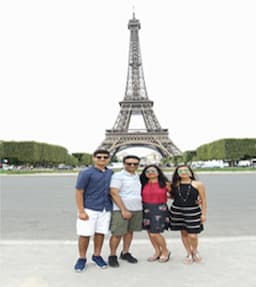 May
MayThanks For A Memorable Trip To China!
Mr. Nirav Parikh
 Jul
JulTrending travel articles

Affordable Bali Trip Under ₹30000 – Flamingo Transworld Budget Itinerary for First-Time Travelers
Summary: Looking for a budget-friendly Bali trip in 2026? This blog shows how you can enjoy a relaxing 5-day Bali Trip under ?30000/- by choosing smart stays, simple food and the right places. Perfect for first-time Indian travellers looking for a budget-friendly Bali holiday. We all have seen tons of pics of temples, Bali Swing, […]
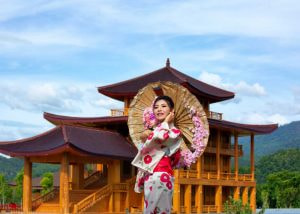
Japan Tour Packages from India Under ₹3 Lakh – Explore Japan on a Budget
Summary: Your dream of exploring Japan is possible, even with a strict budget! This blog shares how Japan tour packages from India under ?3 lakh are possible. It covers real costs, budget tips, the best time to visit, and much more. It helps you understand how to save money and still enjoy a great Japan […]

Singapore Tour Packages from India Under ₹1 Lakh – Budget-Friendly Trips 2025-26
Summary: A trip to Singapore can fit your budget with the right plan. This blog explains how Singapore tour packages from India under ?1 lakh work, what costs to expect, and how to save money. It helps you understand the best places to visit in Singapore in 2026 so you can enjoy this island country […]

Top Indian Restaurants in Hanoi to Try in 2026!
Summary: Indian restaurants in Hanoi are more than just places to eat. They serve Indian food with a Vietnamese welcome. Whether you are a vegetarian, prefer halal food, or just miss home-style dal, these restaurants have it all. Every meal is served with care and a friendly smile, making you feel right at home in […]
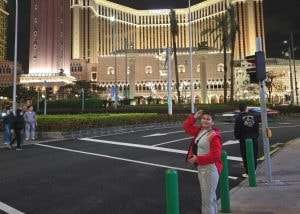
Macau – A city that refuses to sleep , and wont let you either !
Summary: Macau Travel – Macau is a city that never slows down—filled with luxury hotels, thrilling attractions, endless nightlife, and unforgettable energy. From staying at The Venetian to breathtaking Macau Tower views and vibrant casinos, Muskan Golecha’s experience captures the true spirit of a city that you don’t just visit, you live! Macau is one […]

10 Days Itinerary for Switzerland – Perfect Trip Plan for First-Time Visitors!
Summary: If you want a calm, scenic, and well-paced trip, this 10 days itinerary for Switzerland is made for you. It suits families, honeymooners, seniors, and solo travellers. This plan combines top attractions with relaxed, easy travel days. It also keeps Indian comfort in mind. Read on to get the full day-by-day plan, smart tips, […]

Switzerland in Winter 2026: A Fairytale Experience of Snow, Alps & Christmas Markets!
Summary: Switzerland in winter 2026 is pure magic, snow-dusted Alps, glittering Christmas markets, and cozy wooden chalets bring fairytales to life. Whether you are sipping hot chocolate by the beautiful Swiss lakes or exploring the festive streets of cities, it feels like a movie. Perfect for Indian travellers, families, and honeymooners. This blog helps you […]
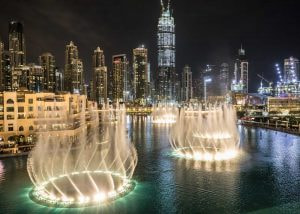
Christmas in Dubai 2025: Lights, Luxury & Festive Shopping!
Summary: Experience the magic of Christmas in Dubai 2025, where the city sparkles with lights, music, and festive cheer. From grand events to lively markets and fireworks, every corner feels joyful. Enjoy delicious food, family fun, and exciting shopping deals during the Dubai festive season. Plan your trip easily with Dubai Tour Packages and make […]

Bhutan In December 2025- Weather, Insider Tips, Best Time to Visit, and Things to Do!
Summary: Experience the magic of a trip to Bhutan in December 2025, with clear skies, vibrant festivals, fewer crowds, and stunning mountain views. This blog guides you through weather updates, travel tips, places to visit, and must-try experiences for your perfect Bhutan holiday. Plan your relaxing, crowd-free visit to Bhutan and experience the authentic charm […]
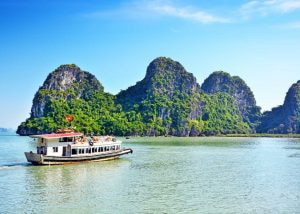
How to Plan A Budget Trip To Vietnam Under ₹60,000!
Summary: Trip To Vietnam Under ?60000 – Dreaming of travelling to Vietnam without stretching your wallet? This blog shares how to plan your trip to Vietnam under ?60,000. It shares everything, including flights, hotels, meals, and activities. Discover must-visit cities, real cost breakdown, and much more to make your Vietnam tour package memorable yet budget-friendly. […]
